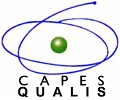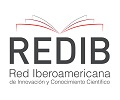Howl’s adaptation of the novel to japanese animated film
Dialogues between literature and cinema in Moving Castle
DOI:
https://doi.org/10.14409/hf.2023.25.e0031Abstract
Howl’s Moving Castle (2004) is a renowned feature film in Hayao Miyazaki's filmography. Despite incorporating the distinctive style characteristics of the Japanese director and Studio Ghibli, this film is based on the adaptation of the eponymous novel written by Diana Wynne-Jones (1986, 2003). This study analyses the similarities and differences in the treatment of the characters in the literary and cinematographic versions of this story, focusing on Howl’s case, given his relevance to the plot and the lack of research related to his character. To this end, a methodology based on Chatman's (1990) notions of “existents” is developed. Ultimately, the study explores the original particularities of the transposition of the screenplay to the film.
References
Chatman, Seymour. (1990). Historia y discurso. La estructura narrativa en la novela y en el cine. Madrid: Taurus, Alfaguara.
Crespo Jusdado, Alejandro. (2009). El cine y la industria de Hollywood durante la Guerra Fría 1946-1969 (tesis doctoral). https://repositorio.uam.es/bitstream/handle/10486/2672/21927_crespo_jusdado_alejandro.pdf?sequence=1&isAllowed=y
Fortes Guerrero, Raúl. (2017). Hayao Miyazaki, la lámpara maravillosa. Un estudio de su cine y de sus referencias humanistas a la luz de las conexiones culturales entre japón y occidente. Universitat de València, Valencia
Gómez Betancourt, Daniela y Wiswell Cajigas, Diana (2013). Adaptar o morir. Pautas para adaptar un libro en cine y television. Bogotá: Editorial Pontificia Universidad Javeriana.
Martín García, Juan. y Peowich, Federico. (2020). La reproducción de valores culturales en el Anime Japonés: análisis de la Industria Cultural Japonesa. Caso de estudio: Studio Ghibli (tesis monográfica). https://repositorio.uade.edu.ar/xmlui/handle/123456789/11167?show=full
Magny, Claude Edmonde (1972). La era de la novela norteamericana. 1ª. ed. Buenos Aires: Juan Goyanarte.
Monleón Oliva, Vicente. (2020). La Lucha Cinematográfica entre Oriente y Occidente. Studio Ghibli versus Disney. Cuestiones Pedagógicas, 29, 112-122. https://doi.org/10.12795/CP.2020.i29.09
Morillo Maqueda, María (2018). El rol femenino en las películas de Hayao Miyazaki (trabajo fin de grado). https://idus.us.es/bitstream/handle/11441/78388/El%20rol%20femeninio%20en%20las%20pel%C3%ADculas%20de%20Hayao%20Miyazaki%20(Mar%C3%ADa%20Morillo).pdf?sequence=1
Pérez, Juan. (2018). Hayao Miyazaki, el dragón japonés que reinventó el cine de animación. En Cultura Joven. http://www.culturajoven.es/hayao-miyazaki-dragon-cine-animacion/
Pérez Bowie, José Antonio (2008). Leer el cine. La teoría literaria en la teoría cinematográfica. 1ª ed. Salamanca: Ediciones Universidad de Salamanca.
Purcell, Fernando. (2009). Una mercancía irresistible. El cine norteamericano y su impacto en Chile, 1910-1930. Historia Crítica, 38. http://www.scielo.org.co/scielo.php?script=sci_arttext&pid=S0121-16172009000200005
Revista Picnic (2020). Studio Ghibli: los libros que inspiraron a las inolvidables películas. https://picnic.media/studio-ghibli-los-libros-que-inspiraron-las-inolvidables-peliculas/
Sánchez-Mesa, Domingo y Baetens, Jan (2017). “La literatura en expansión. Intermedialidad y transmedialidad en el cruce entre la Literatura Comparada, los Estudios Culturales y los New Media Studies”. En Tropelías: Revista De Teoría De La Literatura Y Literatura Comparada, (27), 6-27.
https://doi.org/10.26754/ojs_tropelias/tropelias.2017271536
Silva, Pamela. (2017). Makoto Shinkai no es el próximo Miyazaki. En La Tercera. https://culto.latercera.com/2017/04/06/makoto-shinkai-proximo-miyazaki/
Sunada, Mami. (director y guionista) y Kawakami, Nobuo. (productor). (2013). Yume to kyõki no õkoku. Japón: Dwango.
Wynne Jones, Diana. (2003). El Castillo Ambulante. Madrid: SM.
Published
How to Cite
Issue
Section
License
Copyright (c) 2023 Águeda María Valverde Maestre

This work is licensed under a Creative Commons Attribution-NonCommercial-ShareAlike 4.0 International License.












